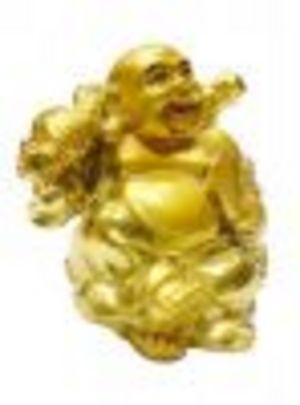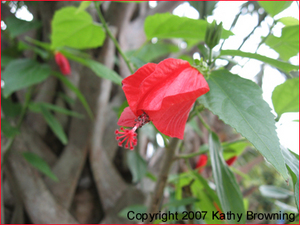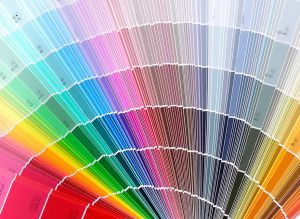Whether you realize it or not, the color on your walls can have a significant influence over your daily mood. Choosing the right colors for the right room can help you create a welcoming feeling in your home. Here, you’ll get an idea on which colors are appropriate for which rooms, based on what they represent and their Feng Shui.
Blue
It is the color of the sky, the ocean and among the most popular of colors because of its known calming effects. Blue is universally accepted as a ‘safe’ color because of its good representation within many major cultures.
Good Representations: Peace, tranquility, stability, calming, harmony, unity, confidence, sky, water, loyalty, trust, security, and cleanliness.
Bad Representations: Cold, depression, melancholy, and suspicion.
Recommended for: bedrooms, therapy rooms, meditation rooms.
Not recommended for: dining rooms, home offices.
Red
Red is generally considered to be a very intense and bold color. It can represent a vast array of feelings depending on the person and their cultural upbringings. As with many colors, in America it may represent a rich, red sports car; whereas in another country it may represent war, hostility and anger. It can also be very sexually stimulating, promoting love, romance and passion.
Good Representations: Love, desire, speed, strength, celebration and luck, purity, happiness, and romance.
Bad Representations: danger, violence, anger, blood, restlessness, and over-stimulation.
Recommended for: living rooms (as a single focal wall,) master bedrooms.
Not recommended for: dining rooms, kitchens, workshops, children’s rooms.
Black
While it may be a timeless and very stylish color from now until the end of time, it isn’t necessarily an ideal choice for painting a room. Black is generally associated with the absence of light, so when it is painted on the walls it will make a room feel smaller and darker.
Good Representations: Authority, power, sexuality, sophistication, formality, elegance, wealth, independence, depth and style.
Bad Representations: Evil, overpowering, anonymity, unhappiness, mystery, fear, sadness, remorse, anger, mourning and death.
Recommended for: focal walls in office spaces.
Not recommended for: children’s rooms.
Brown
Brown is a very neutral color and it gives off a nature vibe. It is the color of Mother Earth. Various shades of brown can mean different things.
Good Representations: Earth, nature, safety, stability, elegance.
Bad Representations: Sad, wistful, dinginess, aging, depression.
Recommended for: home offices.
Not recommended for: bedrooms.
Yellow
The color of sunshine, yellow has been said to aid in digestion. It can also stimulate the brain. The yellow rose can symbolize friendship whereas other colors can represent love or passion.
Good Representations: Optimism, reason, decisiveness, friendship, joy, happiness, imagination, sunshine, hope, spirituality, inspiration, hope, and idealism.
Bad Representations: Rigidness, craftiness, exaggeration, dishonesty, cowardice, betrayal, jealousy, covetousness, deceit, illness, and hazard.
Recommended for: kitchens, hallways.
Not recommended for: bathrooms, meditation rooms.
Green
Green is another nature color. It is a popular favorite color and has many unique tones and shades that other colors could only aspire to. It is also very refreshing and is used commonly in hospitals and waiting rooms.
Good Representations: Fertility, spring, relaxing, masculine, conservative, wealth, youth, good luck, environment, nature, health, renewal, vigor, spring, calming, refreshing, growth, harmony, and generosity.
Bad Representations: Misfortune, deceit, inexperience, envy, and jealousy.
Recommended for: bathrooms, therapy rooms.
Not recommended for: family rooms, playrooms, home offices.
Purple
Historically, purple is known as a symbol of royalty, wealth and power – especially in Europe. This is because it required thousands of snails for even a single gram of dye, therefore only the rich could afford its luxurious color.
Good Representations: Enlightenment, excitement, spirituality, ceremony, transformation, wisdom, mystery, nobility, motivation, passion, royalty, wealth, sophistication, luxury, romantic, and feminine.
Bad Representations: Cruelty, arrogance, force, mournfulness, artificial,
Recommended for: bedrooms, meditation rooms.
Not recommended for: kitchens, bathrooms.
Orange
Viewing a sunrise or a sunset can be a popular pastime for many different cultures. The movement of the sun was of great important, especially in more historical eras (such as Ancient Egypt.) It is a vibrant color, similar to red, but not nearly as bold. It is associated with fall holidays like Halloween, as well as pumpkins, and fall leaves in the northern parts of America.
Good Representations: Warmth, cheerful, balance, powerful, energy, enthusiasm, vibrancy, communication, intellect, and concentration.
Bad Representations: Flamboyancy, rebellion.
Recommended for: living rooms, dining rooms, hallways.
Not recommended for: bedrooms, small rooms.
Pink
Pink is most commonly associated with a more feminine side. It pairs well with black, brown, and green. It is ideal especially for a daughter’s room.
Good Representations: Purity, romance, innocence, happiness, soothing,
Bad Representations: Non-masculinity,
Recommended for: bedrooms.
Not recommended for: bathrooms, kitchens.
White
White is actually considered to be a “summer” color. It is a great light reflector and is considered to be the most neutral of colors. In America, it is associated with brides and weddings – however in other countries wedding gowns are typically black or red. White gowns are actually a newer development in America.
Good Representations: Fresh, innocence, purity, cleanliness, sterility, simplicity, reverence, peace, precision, humility, youth, birth, winter, snow, good, and marriage.
Bad Representations: Lifeless, stark, cold, death (in Japanese cultures, white carnations are used to represent death.)
Recommended for: bathrooms, kitchens.
Not recommended for: dining rooms, children’s rooms.
Sources:
Christine Nyholm; “Use Feng Shui to Choose Colors in Home Decor”
David Johnson; “Color Psychology”




